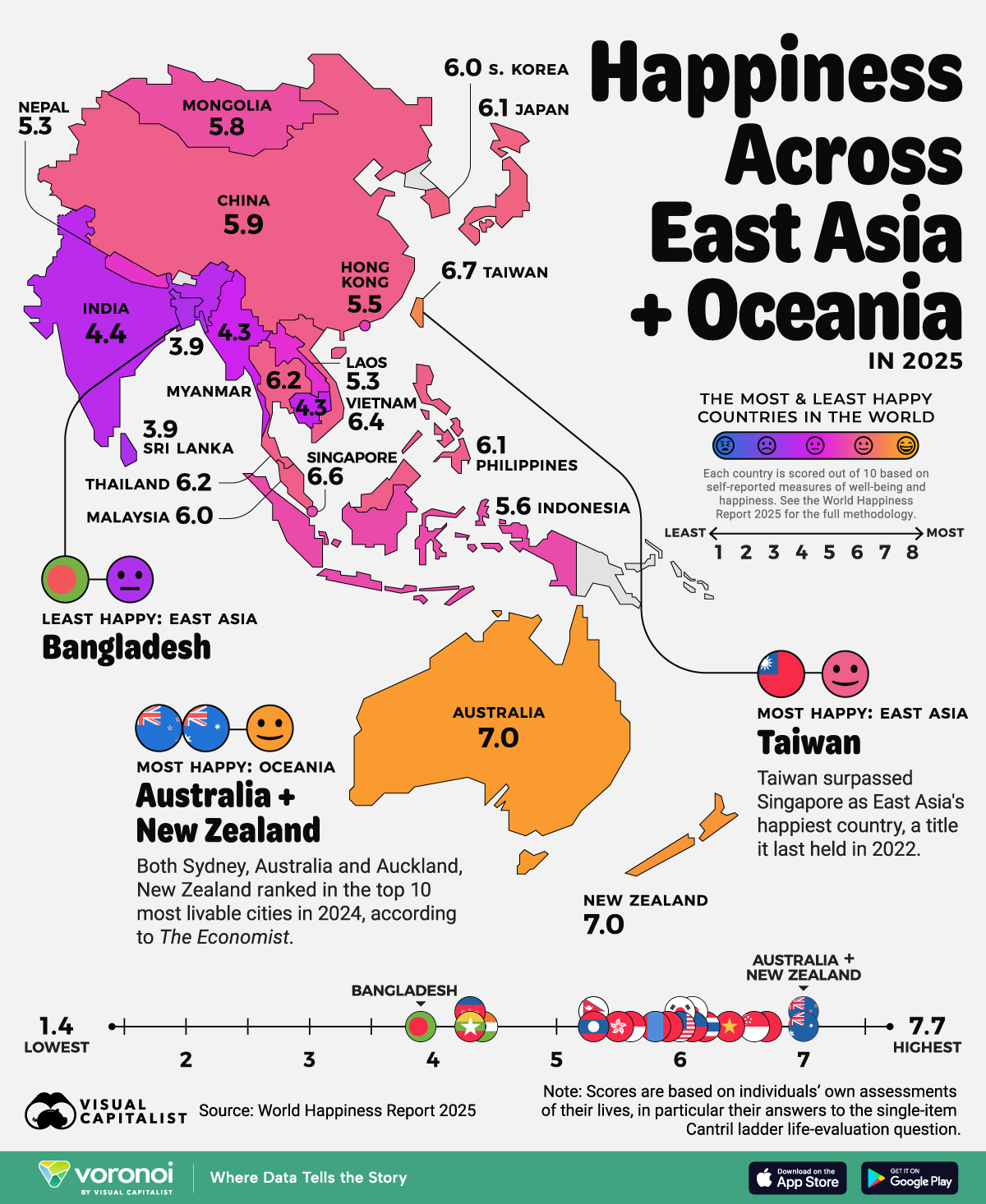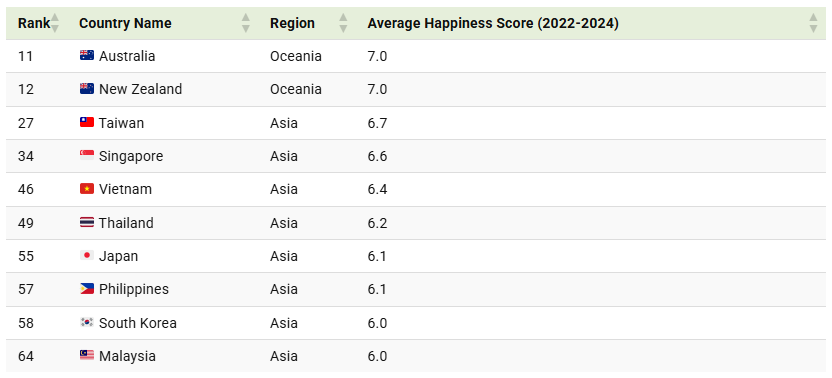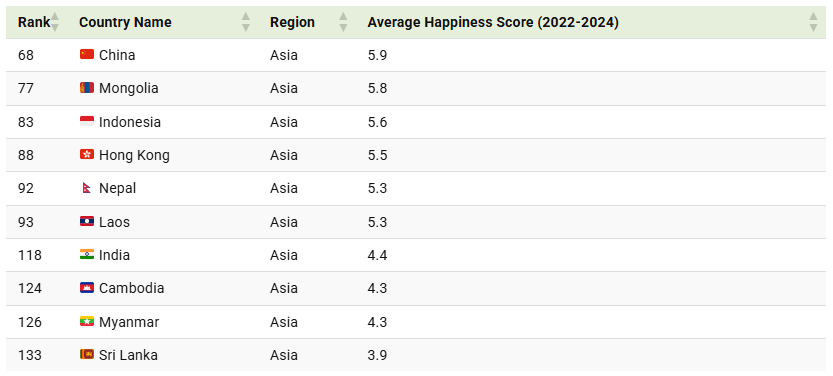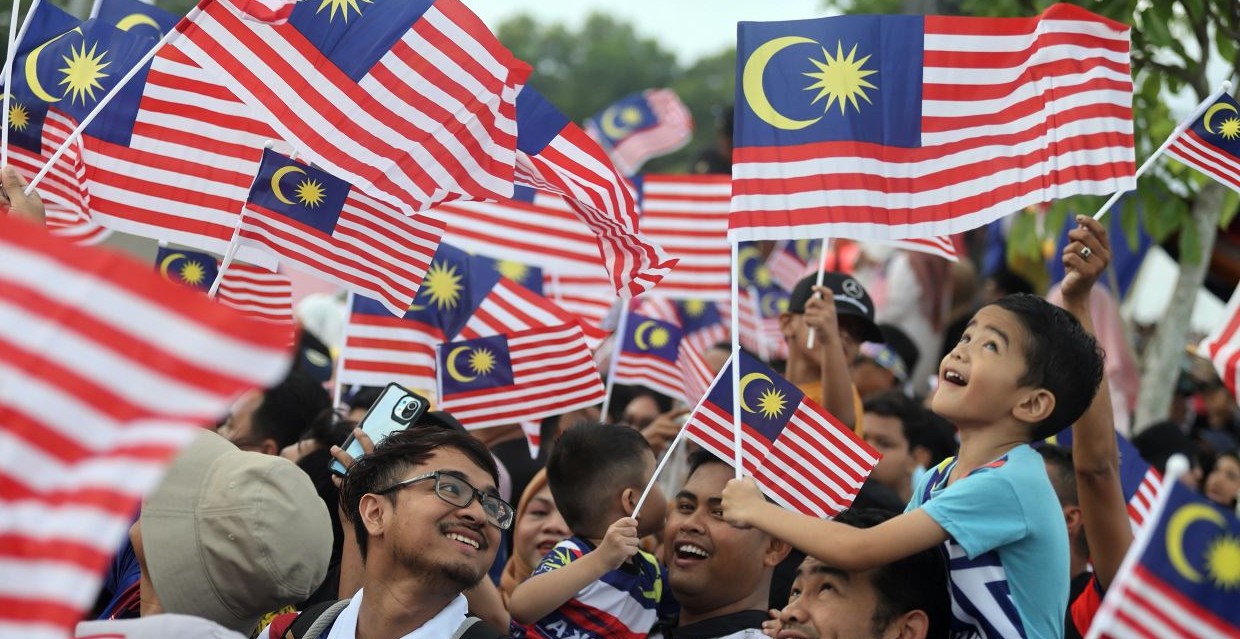The 2025 World Happiness Report reveals wide variations in happiness across East Asia, Southeast Asia, South Asia, and Oceania, with Australia, New Zealand, Taiwan, and Singapore leading the way. How did Malaysia fare?
Oceania continues to lead the way in happiness, with Australia and New Zealand once again ranking among the world’s happiest nations. Across East, Southeast, and South Asia, however, happiness levels show significant variation.
The latest map, as published by Visual Capitalist, highlights findings from the 2025 World Happiness Report, covering East, Southeast, and South Asia, as well as Oceania. Published annually, the report measures global happiness based on life evaluations, social support, freedom of choice, GDP per capita, and several other indicators of well-being. Data for the report is drawn primarily from the Gallup World Poll, supported by additional sources.

Each country’s score represents an average of life evaluations over a three-year period (2022–2024), ranking nations from highest to lowest. Further details on how these rankings are calculated can be found at the end of this article.
WHO’S THE HAPPIEST?
For 2025, Taiwan claims the title of Asia’s happiest country, overtaking Singapore, which held the top spot in both 2023 and 2024. Over the past decade, these two nations have regularly traded places as the region’s happiness frontrunners.

Both Taiwan and Singapore benefit from high living standards, strong healthcare systems, and resilient economies, all contributing to their consistently strong performances in the happiness rankings. Notably, Taiwan remains one of Asia’s top 10 economies despite its modest population, largely driven by its dominant semiconductor industry.
At the opposite end of the scale, Bangladesh continues to rank as the region’s least happy country. Dhaka, its crowded and busy capital city, has frequently appeared among the world’s least livable cities, adding to the nation’s ongoing challenges.
Malaysia, for its part, maintained a mid-range position in the 2025 World Happiness Report, ranking comfortably above several of its regional neighbours while attaining a global ranking of 64th place. While not yet matching the scores of Singapore or Thailand, nor its far southern neighbours of Australia and New Zealand, Malaysia continues to perform respectably, supported by steady economic growth, improving healthcare access, and strong community ties.

Malaysia ranked ahead of Indonesia, Vietnam, and the Philippines, reflecting its relative stability and quality of life improvements. However, challenges such as income disparities and urban stress remain areas for progress as the country aims to climb higher in future editions of the report.
Speaking of Australia and New Zealand, meanwhile, the two countries maintained their impressive positions globally, ranking 11th and 12th respectively. According to The Economist, both Sydney and Auckland secured spots in the top 10 most liveable cities in 2024, reinforcing the region’s reputation for high quality of life.

Myanmar’s score of 6.2 in the 2025 World Happiness Report comes as something of a surprise, given the ongoing civil conflict and widespread instability. Despite the turmoil, some pockets of social cohesion and community resilience have likely buoyed the numbers in this cycle. However, the recent devastating earthquake near Mandalay is expected to cast a long shadow over future rankings, with the compounding effects of a catastrophic natural disaster and political unrest almost certain to see Myanmar’s happiness score decline in the year ahead.

WHERE DOES THE DATA COME FROM?
The World Happiness Report draws on the Gallup World Poll, which surveys approximately 1,000 people in each of over 140 countries annually. The total sample typically exceeds 140,000 respondents each year. Rankings are based on three-year averages, with the latest edition covering 2022 to 2024.
Participants assess their lives using the Cantril Ladder, a scale from 0 to 10. Six key factors shape the rankings: GDP per capita, healthy life expectancy, social support, freedom to make life choices, generosity (measured by acts of charity), and perceptions of corruption. In addition to life evaluations, the report also examines emotional well-being by tracking positive and negative experiences such as laughter, worry, and sadness.
The 2025 report places additional emphasis on social trust and acts of kindness, looking at behaviours such as sharing meals, helping strangers, and returning lost wallets — all seen as meaningful contributors to national happiness.

A NOTE ON CRITICISMS
The World Happiness Report is not without its critics. Some argue that its survey questions focus too heavily on satisfaction with socioeconomic conditions rather than capturing personal, emotional happiness. Cultural differences also play a significant role in how people perceive and express happiness. Moreover, while the report reflects nationally representative samples, internal disparities between groups within a country can be averaged out in the final score.
To its credit, the report does acknowledge these inequalities by tracking the ‘gap’ between the happiest and least happy halves of each population, providing a fuller picture of happiness within nations.
"ExpatGo welcomes and encourages comments, input, and divergent opinions. However, we kindly request that you use suitable language in your comments, and refrain from any sort of personal attack, hate speech, or disparaging rhetoric. Comments not in line with this are subject to removal from the site. "





















